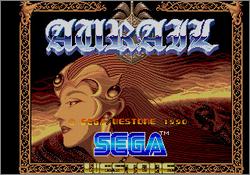The topic of this article may not meet Wikipedia's notability guidelines for products and services .(May 2023) |
| Aurail | |
|---|---|
 Title screen | |
| Developer(s) | Westone |
| Publisher(s) | Sega |
| Composer(s) | Shinichi Sakamoto |
| Platform(s) | Arcade |
| Release | |
| Genre(s) | Shooter game, first-person shooter |
| Mode(s) | Single-player, multiplayer |
| Arcade system | Sega System 16B |
Aurail is a scrolling shoot 'em up arcade game developed by Westone and released by Sega in 1990. The player pilots a tank mecha and shoots enemies (it can fire in 8 directions), collects power-ups to increase shields, operates the remote attack drone, and defeats bosses to advance levels. It features tunnel levels with a first-person view.
Contents
In North America, the game was released as an arcade conversion kit. [2]